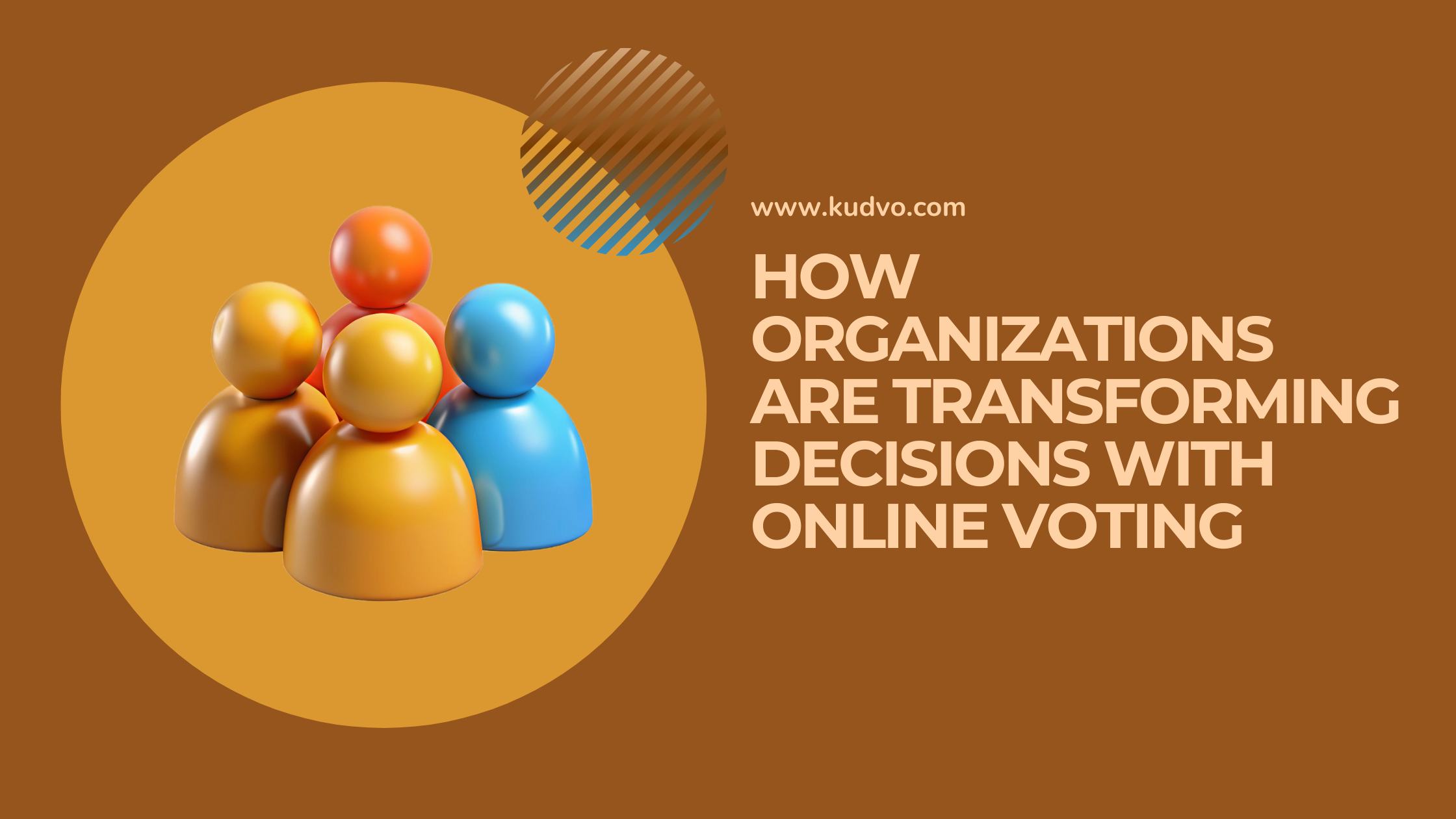How Organizations Are Transforming Decisions with Online Voting
Introduction
Ever sat through a long meeting where decisions were made by just a few vocal people in the room?
You’re not alone. Traditional decision-making processes in organizations can be slow, biased, and disengaging. But with the rise of online voting, organizations are finding smarter, more inclusive ways to gather input and take action.
In this post, we’ll explore how different types of organizations—from nonprofits and businesses to unions and schools—are using online voting to empower members, improve transparency, and make faster, fairer decisions. Plus, we’ll show how platforms like Kudvo are making secure digital voting simple and effective.
1. Making Decisions More Inclusive and Accessible
One of the biggest advantages of online voting is that it levels the playing field.
In traditional settings, people who can’t attend in person—due to time zones, work commitments, or accessibility issues—often don’t have a say. Online voting eliminates that barrier.
Key benefits:
Allows remote members to vote from anywhere.
Offers multi-language and accessible interfaces.
Encourages participation from younger, tech-savvy audiences.
Example:
A national nonprofit with chapters across the country adopted online voting for its annual board elections. As a result, voter turnout jumped by 42% compared to the previous year when voting was in person only.
2. Saving Time and Resources
Let’s face it—coordinating meetings, paper ballots, and manual counts can be a logistical headache.
Online voting streamlines the process:
No printing, mailing, or manual tallying.
Real-time results and analytics.
Easy scheduling for recurring decisions like policy changes or officer elections.
Case in point:
A mid-sized trade union moved its contract ratification votes online. What used to take weeks of coordination was wrapped up in three days, with verified results and zero printing costs.
3. Building Trust with Transparency and Security
Trust is essential in any vote. But even in internal elections, concerns about fairness or manipulation can arise.
Modern online voting platforms offer:
Tamper-proof encryption and audit trails.
Anonymous ballot casting to protect voter privacy.
Transparency through verifiable results and third-party audits.
Stats to consider:
According to a 2023 Deloitte report, 68% of organizations that implemented secure e-voting saw an increase in member trust and satisfaction.
Example:
A global alumni association used Kudvo’s secure voting platform for its leadership elections. Members praised the process for being clear, fast, and secure—boosting trust in the organization’s leadership.
4. Encouraging Ongoing Member Engagement
Voting doesn’t have to be a once-a-year thing.
With digital tools, organizations can:
Run quick polls and feedback votes.
Crowdsource ideas for events or policies.
Keep members engaged with regular input opportunities.
Try this:
Set up quarterly decision polls using online voting.
Use ranked-choice voting to pick project priorities.
Add voting to your member app or intranet for ease.
Organizations that adopt regular, easy-to-access decision-making processes often report higher engagement and retention rates among members and employees.
Conclusion
Online voting isn’t just a tech upgrade—it’s a transformation in how organizations make decisions.
To recap:
It makes voting more inclusive and accessible.
It saves time and money.
It builds trust through secure and transparent processes.
It keeps members involved and empowered year-round.
If your organization is still relying on paper ballots or show-of-hands votes, it may be time to explore a smarter alternative. Platforms like Kudvo provide secure, user-friendly voting tools designed for every kind of organization—from clubs and unions to global nonprofits.
👉 Ready to upgrade how your team decides? Visit www.kudvo.com to learn more.
